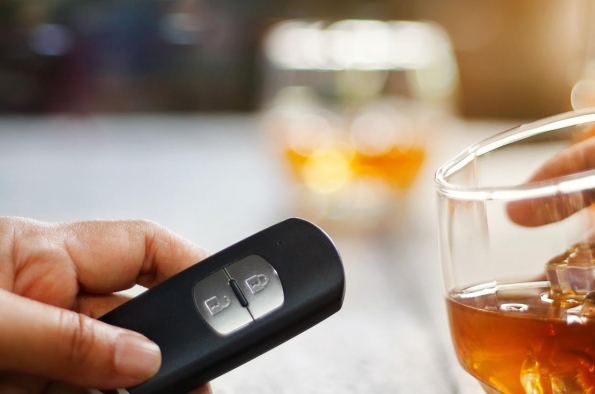The UK’s largest independent road safety charity, IAM RoadSmart, is calling for new initiatives from the Government to drive down the number of drink-drive related deaths on UK roads. This follows figures released from the Department for Transport confirming yet another year of stagnation in annual drink-drive statistics, highlighting nine years of zero progress.
Final estimates for 2019 in: Reported road casualties in Great Britain: final estimates involving illegal alcohol levels: 2019, revealed 230 people died in crashes where at least one driver was over the drink-drive limit.
Over the same period, an estimated 7,800 people were killed or injured when at least one driver was over the drink-drive limit. This represents an average of around 21 deaths or injuries a day. However, this only constitutes a minor fall of 10% from 8,680 in 2018.
Worryingly, the total number of crashes where at least one driver was over the alcohol limit was 5,350 in 2019, an average of around 14 crashes a day.
IAM RoadSmart is calling for a smarter package of measures from Government to reduce the number of drink-drive related incidents, including a further lowering of the drink-drive limit in England and Wales to match Scotland, wider use of drink-drive rehabilitation courses, fitting of alcolocks, longer running high-profile education campaigns and seizing the vehicles of repeat offenders.
Neil Greig, Director of Policy and Research at IAM RoadSmart, said: “While there has been a small reduction in the number of drink-driving related deaths and injuries, once again it represents little progress in reducing the carnage on UK roads caused by drink drivers.
“There is no one simple answer to reducing these figures, but IAM RoadSmart believes a much smarter package of measures is needed from the Government including a lower drink-drive limit to reinforce good behaviour, fast-track of evidential roadside testing machines to release police resources and tailored approaches to help drivers with alcohol problems.
“Rehabilitation courses work, and we believe all those convicted of drink-driving should be sent on one automatically rather than having to opt in. More use of alcolocks – which requires the driver to blow into a mouthpiece on the device before starting or continuing to operate the vehicle – and extra penalties such as vehicle forfeiture could all be part of a more joined-up approach to the problem. Hard core drink-drivers are simply not getting the message, and these figures will not improve until policy changes.”
Overall drink-driving accounted for 5% of collisions in Great Britain which varied from region-to-region. With the highest number of casualties, nearly 7%, due to drink-driving occurring in Wales, followed by England and Scotland at around 5% each. Regionally, casualty rates varied from nearly 8% in the East Midlands to just under 4% in Greater London.
In 2019, 78% of drink-drive related casualties involved male drivers or riders. Further, a higher proportion of casualties in drink-drive accidents were aged between 25 and 59 than in all reported accidents in 2019 (63% in drink-drive accidents compared to 56% in all accidents). Drink is also over-represented among people aged 16 to 24 (23% in drink-drive accidents compared to 19% in all accidents).
To help combat the prevalence of drink driving among young people, THINK! is bringing back its Pint Block campaign, with the aim to spread the message to 17–24-year-old male drivers that a mate doesn’t let a mate drink drive.
Neil concluded: “We welcome THINK!’s decision to reintroduce their ‘Pint Block’ campaign to coincide with the temptation to take a summer drink. Drivers aged 17–24 are four times more likely to be killed or seriously injured than male drivers aged 25 or older. Such tailored education programs are effective in communicating to young adults that drink driving should be given the red light.”

















